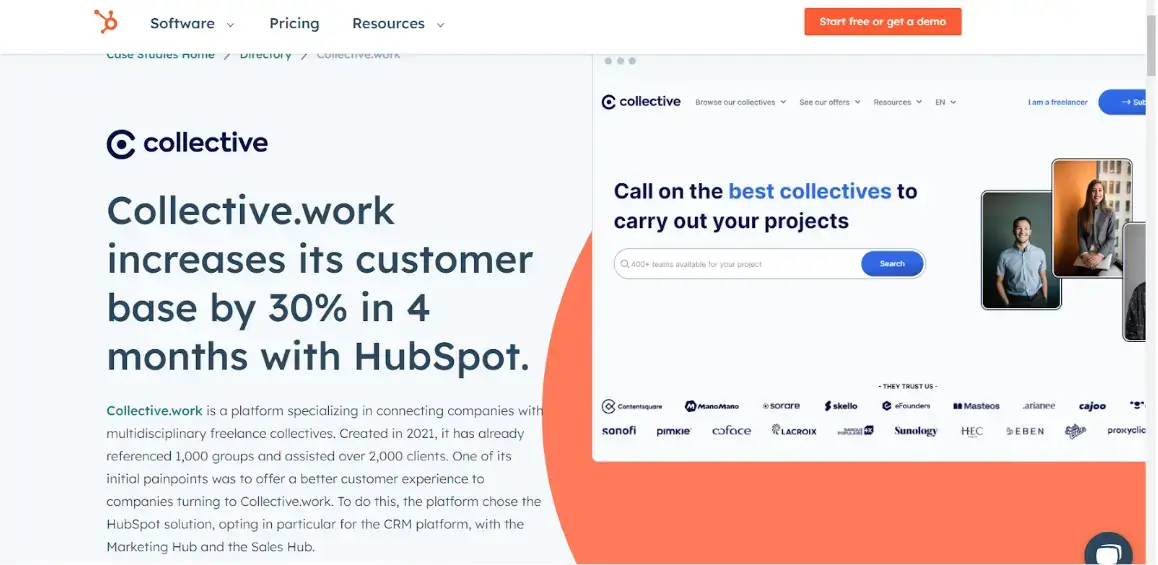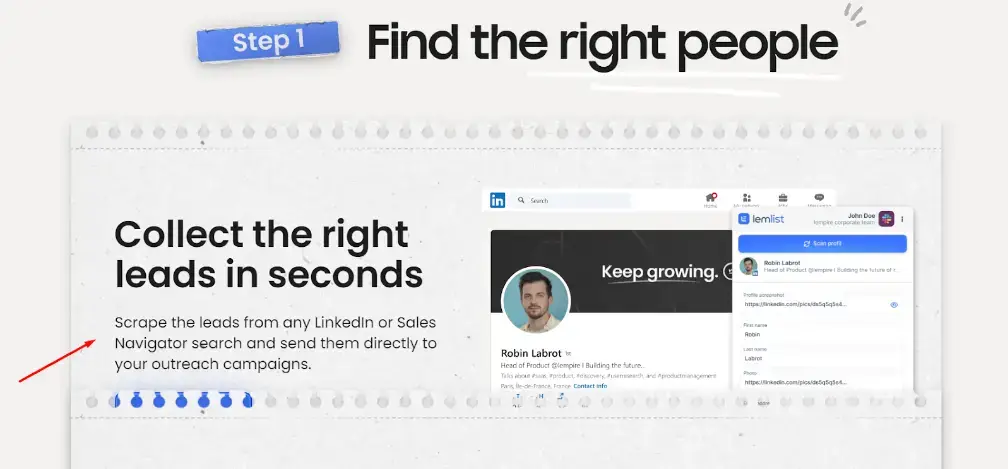Data is the gold mine for SaaS businesses in today's hyper-competitive market. The data-driven approach ensures successful marketing campaigns, drives quality leads, and boosts conversions. It is our ultimate ally!Companies leveraging data for marketing initiatives achieve 5 to 8 times higher ROI than others.
What’s more? When used effectively, data align sales and marketing teams, the most crucial step in uplifting a firm’s revenue marketing efforts.
Reports reveal that aligning these teams can contribute 70% more revenue growth than non-aligned teams.
In this quick guide to revenue growth, I’ll share how data can empower your SaaS business to navigate complexities confidently, make informed decisions, and achieve new heights.
Let’s get started!
In this article:
- Unearth and Analyze Your Target Market
- Craft Compelling Content that Drives Conversions
- Enhance Customer Experience (CX)
- Monitor Key Performance Indicators (KPIs)
- Summing Up
Unearth and Analyze Your Target Market
Analyzing the target market sets the stage for effective targeting, informed decision-making, and positive business outcomes.
Early in my entrepreneurial journey, I realized the potential pitfalls of relying solely on “gut instinct.”
Start your journey with a thorough analysis of the target market. Dive deep into top industry trends, customer preferences, buying behavior, needs, pain points, competitor strategies, and more.
Benefits of Taking a Data-Driven Approach
- You can refine your offerings. Identifying the target market can help design and develop features and functionalities resonating with your target audience.
Furthermore, deploying advanced data analytics tools can help gain valuable insights into customer behavior, such as browsing patterns, buying history, engagement, etc. Leverage this information to refine your SaaS offerings and stay competitive in the ever-evolving SaaS industry. - You will strengthen your marketing strategies. Understanding your target audience and potential gaps in the market can help you tailor marketing strategies to address specific customer pain points and needs effectively.
- You will uncover critical metrics. You can discover the ideal customer profile (ICP), key marketing channels, and more with quality data and create targeted campaigns. It will maximize the effectiveness of your efforts.
- You can build a customer-centric business strategy. Keeping customers' needs at the forefront of your business can enhance user satisfaction and adoption rates, thus fostering long-term customer retention.
Let me share a real-life example of how data can prove revolutionary for SaaS firms, especially small businesses (SMBs), in their early growth stage.
See how Collective.work leverages data to boost its revenue. The B2B startup uses Hubspot’s CRM to understand prospects’ pain points and streamline their internal work processes.

This data-driven approach has helped them gain in-depth insights into customer needs and expectations.
The result? Over 20% increase in lead generation and 30% growth in revenue within four months.
Craft Compelling Content That Drives Conversions
High-quality content helps SaaS businesses build and nurture positive customer relationships. It allows you to create value for the target market, thus boosting brand awareness and strengthening your image as a thought leader.
Mark my words - relevant, helpful, and well-researched content addressing customer pain points will keep them returning for more.
The result? High traffic, engagement, lead generation - and eventually, higher conversions! My brand - Revlitix’s blog, stands testament to the effectiveness of this approach.
On the other hand, poor content can undermine a firm’s reputation, hindering long-term revenue growth. Here are a few quick tips for creating engaging content that drives conversions.
- Conduct thorough research to understand your target audience’s pain points and needs.
- Use best SaaS tools like Google Trends and Exploding Topics to gauge current industry trends and identify relevant topic ideas. Plan and create a content calendar for consistent content delivery.
- Use various formats, such as blog posts, articles, case studies, and more, to cater to different audience preferences. Ensure incorporating the best SEO best practices to enhance your reach and traffic.
Notice how Eloomi, a learning and development platform provider, leverages all these tactics.

This B2B company entrusts customer data, including their needs, pain points, behavior, and preferences, to design its content strategy. This data-driven approach has helped the company maximize its customer engagement.
No wonder its 5-year search growth is 100%, a tough nut to crack in the SaaS domain!
Enhance Customer Experience (CX)
The customer experience (CX) is a pivotal entity that can make or break a business, and so as entrepreneurs, we must emphasize delivering a stellar experience!
Creating customer value is a fundamental aspect of CX that requires a long-term commitment to exceed expectations.
Here’s what I see. Ensuring CX requires a strategic approach to understand, meet, and exceed customers’ needs.
The key is to make them feel appreciated and satisfied across their life cycle. That’s where you can count on customer data, especially to:
- Gauge your firm’s readiness to meet customer needs and expectations.
- Provide relevant content and deals based on their preferences.
- Tailor your interactions across marketing channels, including websites, social media, email, multimedia message content via texting, etc.
- Eliminate unnecessary friction points in the customer journey, making the buying process easy.
- Equip your team with the right collaboration tools, essential training, and autonomy to provide exemplary customer service.
It can help enhance customer experience, fostering high conversions and loyalty.
Check out how Lemlist, an email outreach software provider, uses these tactics to refine CX across marketing channels.
Notice how they harness the power of data to create targeted messaging for interactions via chat provision. Besides, the content on their website speaks volumes about their brand tone consistency.

You can see the same viewpoint and storytelling across Lemlist’s LinkedIn account (social).

Monitor Key Performance Indicators (KPIs)
Tracking KPIs serves as a vital benchmark for monitoring progress and making data-driven decisions.
By keeping a tab on the key metrics, you can identify market trends, customer preferences, effectiveness of marketing strategies and assess your overall business performance.
As a SaaS entrepreneur, KPI tracking can prove a game-changer for your SaaS, just like it did for mine. It enabled my team to pivot business strategies for revenue growth and success.
Wondering what KPIs you should monitor to achieve the best outcomes? Well, the answer depends on the goal and role of the stakeholder.
For instance, your company’s chief marketing officer (CMO) must monitor metrics like monthly recurring revenue (MRR), customer lifetime value (LTV), customer acquisition cost (CAC), and more with the help of lawful revenue recognition data to drive effective marketing campaigns and revenue growth (key goals).
On the other hand, your firm’s chief financial officer (CFO) should track metrics like gross profit margin, return on investment (ROI), cash flow, and more, using revenue recognition software to optimize resource allocation and effectively manage the financial aspects of your firm.
So, acknowledge the role and goals of the stakeholders to define crucial KPIs. It will streamline your workflow, allowing your team to stay abreast of the competitive landscape.
Summing Up
Instinct-driven decisions can have detrimental consequences on your SaaS revenue and growth.
On the other hand, leveraging data to make business decisions can help uncover untapped opportunities, strengthen marketing initiatives, and provide excellent customer excellence.
The insights I've shared in this revenue-growth guide will take your small business to new heights. Connect with me for any questions or suggestions on the perspective and tactics I shared.
Author Bio
Madhu Puranik is the Founder and CEO of Revlitix, a revenue analytics platform that leverages AI to automate analytics for revenue teams. He loves sharing his thoughts about startups, B2B marketing, revenue marketing, marketing analytics, and SaaS tools.


